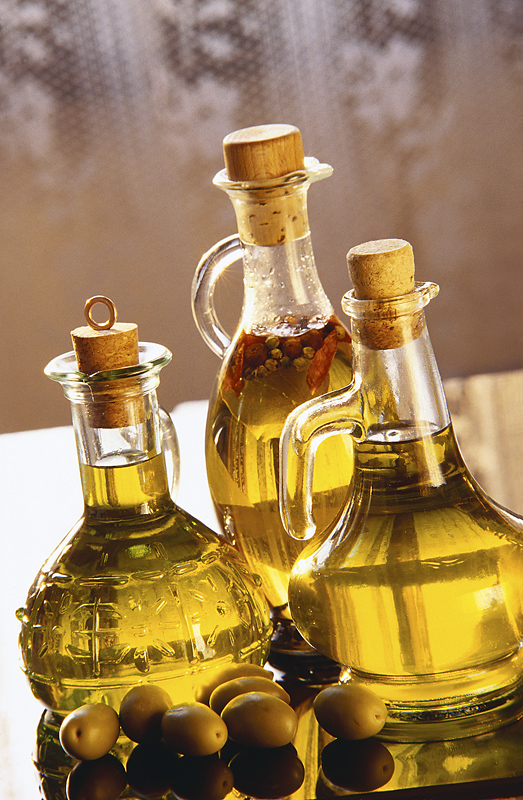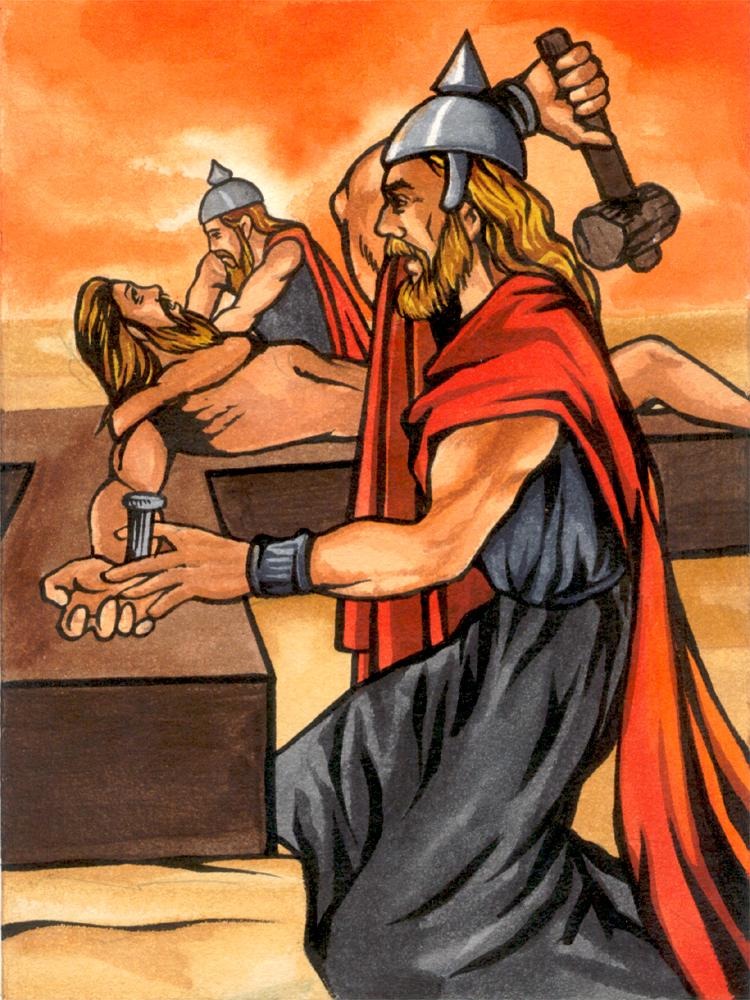Tag Archives: Yeshua
Plan of Salvation in the Biblical Feasts
Got the Anointing? Got the Anointed One??
Leviticus 8:12, Anointing oil … consecrates [Heb. kadash]. The Hebrew word kadash signifies the state of something that belongs to the realm of the sacred, and which is set-apart for divine use and has been separated from the sphere of the secular, common or profane. The Bible often uses the term holy (meaning “set-apart”) to signify this state of being. The word of Elohim designate many things as set-apart:
- The ground upon which YHVH is standing (Exod 3:5; Josh 5:15)
- The people of Israel (Exod 19:6; Deut 14:21; 26:19)
- The Sabbath (Exod 16:23; 20:8)
- The Tabernacle of Moses (Exod 26:33)
- The garments worn by the high priest (Exod 28:2)
- The altar of sacrifice (Exod 40:10)
- The offerings made on the altar (Lev 6:18)
- YHVH’s feast days (Lev 23:2)
- The camp of Israel (Deut 23:14)
- Heaven as the abode of Elohim (Deut 26:15)
- YHVH Elohim (Job 6:10; Pss 22:3; 78:4; 99:5)
- Zion and Jerusalem (Ps 2:6; Matt 27:53; Rev 22:19)
- The Spirit of Elohim (Matt 1:20)
- The angels (Matt 25:31)
- The servants of Elohim (Mark 6:20)
- The name of YHVH (Luke 1:49)
- Yeshua (Acts 2:27; 3:14)
- YHVH’s prophets (Acts 3:21)
- The saints (1 Pet 2:9; Rev 22:11)
- The Torah (2 Pet 3:21)
YHVH’s people are to learn to make a difference between that which he designates as being kadash (holy) and that which is profane (Lev 10:10). In order to do this, one must know what YHVH defines as set-apart and then align our thinking and lifestyle with that.
The act of consecrating someone (or something, e.g. Exod 30:26), as occurs in Leviticus 8:12, often involves the ritual of pouring olive oil on them to signify their being set-apart for a special work or service. This is called anointing (see Exod 28:41; 29:7; 1 Sam 16:12; 1 Kgs 1:34; Isa 61:1; 2 Cor 1:21).
Yeshua’s title is Messiah (Heb. Mashiach) literally meaning, “one who is anointed, smeared or consecrated with (olive) oil.” The English word Christ derives from the Greek word Christos/Cristos, which is the Greek equivalent of the Hebrew word mashhiach. In biblical thought, the Messiah would be One coming from heaven who would possess a super-anointing of the Spirit of Elohim (Isa 11:1–10; 42:1–21; 61:1–3; John 3:34) to accomplish the purposes of Elohim on earth.
Have you placed your trusting faith in Yeshua the Messiah, the Anointed One from heaven? He is the only one who can take away the shame, guilt and penalty of your sin, and the only one who defeated death and can lead you past the veil of death and into immortality.
A t-Shaped Cross Vs. an I-Shaped Cross Discussed
Stauros, the Koine Greek word for cross, like most words in all languages, has several meanings. To arrive at the true meaning of a word, we can’t just look at the first meaning in a list of dictionary definitions or choose the meaning that best suits our personal biases or theologies.
Too determine which dictionary definition of a word best applies to a particular word in a literary situation, we must consider all the meanings of a word and then look at the context of the literature in which the word is found, and then choose the meaning that best fits.
Even then, well meaning people will have differences of opinions on this (e.g. The Companion Bible, by E.W. Bullinger, appendix 162). This is the dilemma that scholars who translate literary documents from one language to another face. This is the case with the Koine Greek word, cross, which is found in the NT some 32 times.
Stauros means “un upright, pointed stake used for fencing or in the construction of a stockade. It can also refer to a torture instrument, or a cross on which the Roman’s executed criminals. A stauros came in several basic forms: a vertical upright, pointed stake, or an upright stake with a crossbeam resembling our capital letter “T” or our small letter “t”, or it consisted of two intersecting beams of equal length like our letter “X”. Due to the sign that was attached to the top of Yeshua’s torture stake, it seems that his cross was shaped like a “t”; that is, the upright stake projected above the cross beam thus giving the Romans a place to attach the sign (The TDNT, vol 7, p. 572; International Standard Bible Encyclopedia, vol 1, pp. 826-827).
The reasons that I lean toward the idea that Yeshua was crucified on a t-shaped cross are several. As noted above, such a cross gave a place for the Romans to attach their sign (Mattt 27:37, Mark 15:26, Luke 23:38, John 19:19).
Additionally, more than one nail was used in Yeshua’s hands to attach him to the cross (John 20:25). The use of two nails would have been more necessary had the cross been t-shaped as opposed to an upright stake.
Moreover, the Tabernacle of Moses is a symbolic and prophetic picture of the death, burial and glorification of Yeshua. It is literally a multi-dimensional gospel tract! As such, the furnishings therein are arranged in the form of a t-shape cross.
Similarly, the tribal encampments around the tabernacle are laid out like a perfect t-shaped cross (see Num 2). This is a picture of the believer who, through the ritual of baptism for the remission of sins (see Rom 6:3–11) must symbolically identify with the death, burial and resurrection of Yeshua when coming to faith in him.
Furthermore, the marks made by the blood of the lamb on the doorposts of the Israelites’ homes on their first Passover in Egypt made the outline of a perfect t-shaped cross (Exodus 12:7). There are several dozen aspects of this first Passover that prophetically pointed forward to Yeshua who was the Passover Lamb of Elohim slain from the foundation of the world for the redemption of man from his sin, and who fulfilled these symbols perfectly by his death. The t-shaped cross is but one of these prophetic symbols. An I-shaped cross would not have fit this symbology.
Moreover, when Moses initiated the the tabernacle, his steps form a perfect cross—actually a cross with an arrow on it that points man into the holy of holies, which is a picture of YHVH’s heavenly throne room (Exod 40).
Next, when the angelic messenger of YHVH went through Jerusalem before its fall to the Babylonians to search out those saints that would be spared from that judgment, he put a mark in the form of a Paleo-Hebrew letter tav (shaped like our small letter t) on their foreheads. This was another prophetic symbol that pointed to Yeshua, who, through his work on the cross, is our salvation (Ezek 9:4).
Finally, when Jacob was prophetically praying over his two grandsons who whose descendants would largely become the Christian church, he crossed his arms in the shape of a Paleo-Hebrew letter tav, which, pictographically, some take to mean,”sign or seal of the covenant” (Gen 48:14).
With regard to the Scriptures that say that Yeshua was crucified on a tree, the Hebrew word for tree is etz, which can mean both tree and stick (e.g. see Ezek 37:16). A cross whether in a t or an I shape is still made of wood and both can fit the definition of the Hebrew word etz. But how many trees have you seen that don’t have branches? More trees in their natural state resemble a t shape than an I shape. Some trees even have trunks with branches that are opposite each other on the trunk like a t-shaped cross. So in light of these facts, it is not a logical stretch to call a t-shaped cross “a tree.”
Personally, I don’t care whether Yeshua died on a t or an I shaped cross—only that he died for my sins. This is the main point! Let’s never stray from the importance of this truth. Furthermore, I have no ax to grind in this argument. I could care less about defending any cherished doctrines or traditions of the church. I care only about finding and then believing the truth as a found in the Bible. The overwhelming evidence points to the fact that Yeshua was crucified on a t, and not an I shaped cross. That is the reason, and the only reasons, I subscribe to this idea.
I will conclude with this personal testimony. I was born and raised in a Torah-believing church that hated traditional Christianity. We had a sinful Pharisaical superiority complex. We rejected many biblical truths simply because the mainstream church believed them. The idea of a t-shaped cross was one of those ideas we rejected. It wasn’t until I was in my early 30s after leaving that church that I began to objectively examine the truth about the shape of the cross and became convinced based on the biblical evidence that it was t-shaped, not I-shaped as I had been brainwashed to believe. When I presented the biblical evidence to some family members who were still in that church, they flat-out rejected what I had to say—not because it wasn’t the truth, but simply because their minds were closed and the truth didn’t conform to their biases and bigoted opinions. They had been psychologically conditioned to believe something else for the wrong reason. Sadly, there are too many people in our day who are returning to the biblical, Torah foundations of our faith and are rejecting biblical truths simply because the church believes the same things. Shame on us for our lack of intellectual honestly. I’ve been there and done that! I had to repent to this sin.
What Shape Was Yeshua’s Cross?
John 20:25, Nails. The Greek word for nail is in its plural form. The plurality of the word nails is corroborated by the fact that all the major English translation of the NT whether from both the Alexandrian or Byzantine texts contain the Greek word helon (nails, plural) as opposed to helos (nail, singular). This is the case in the Aramaic NT as well (see the translations of Ethridge and Murdock, for example). William Mounce whose Koine Greek grammar book is used in the majority of seminaries in the U.S. in his Greek and English Interlinear NT designates this word as in the genitive case, plural form and masculine gender.
What is the point here? Yeshua was crucified on a standard t-shaped cross, not on an upright stake minus its cross arm. Had he been crucified on the latter torture instrument, only one nail would have been used to secure his hands to the one post, not more than one nail as this text indicates, which would have been required on the traditional t-shaped cross.
Do you know what “the truth” is from a Hebraic understanding?
John 17:17, Truth. Yeshua, the One sent to this earth from Elohim in heaven, says here, “Thy [Elohim’s] Word is truth.” In Matthew 4:4, Yeshua said, “Man shall not live by bread alone, but by every word that proceeds out of the mouth of Elohim.”
So what is truth? The word in Hebrew for truth is emet (spelled aleph, mem, tav), which is comprised of the first, middle and last letters of the Hebrew alphabet. Truth embodies everything from the beginning to the very end of YHVH’s Word (literally, his Torah or the first five books of the Bible, and secondarily, the whole Bible from Genesis to Revelation).
Interestingly, the Scriptures call Yeshua “the beginning and the end of our faith” (Heb 12:2), and likens him metaphorically to alpha and omega (Rev 1:8, 11; 21:6; 22:13), which are the first and last letters of the Greek alphabet. These letters corresponds in symbolic meaning to the aleph and tav, which are the first and last letters of the Hebrew alphabet.
In Hebrew thought, truth consists of all of the Word of Elohim from the first letter in the Hebrew alphabet to the last letter. This same idea is picked up by the Jewish apostolic writers of the Testimony of Yeshua and applied to Yeshua who was the Word of Elohim sent to humanity in human form. As the human embodiment of the divine Word of Elohim he was referred to as the alpha and omega, or, in Hebrew thought, the aleph and the tav. We see this idea expressed in John 1:1–5 and 14 where it says of Yeshua,
In the beginning was the Word [Torah], and the Word was with Elohim, and the Word was Elohim. The same was in the beginning with Elohim. All things were made by him; and without him was not any thing made that was made. In him was life; and the life was the light of men. And the light shineth in darkness; and the darkness comprehended it not.… And the Word was made flesh and dwelt among us, (and we beheld his glory, the glory as of the only begotten of the Father) full of grace and truth.
John 18:38, What is truth?
Pilate asked Messiah Yeshua, the Son of Elohim, a question many inquiring minds have been asking since time immemorial, “What is truth?” (John 18:38). If someone were to ask you this question what would your answer be?
Since the word truth is found some 300 times in the Scriptures it would be safe Continue reading
Lessons from a Tree on How to Abide in Yeshua, Who Is Our Tree of Life
Now let’s combine the concept of abiding, humans being like trees and Yeshua as it relates to his teaching about abiding in him in John 15.
I am the true vine, and my Father is the husbandman. 2 Every branch in me that beareth not fruit he taketh away: and every branch that beareth fruit, he purgeth it, that it may bring forth more fruit. 3 Now ye are clean through the word which I have spoken unto you. 4 Abide1 in me, and I in you. As the branch cannot bear fruit of itself, except it abide2 in the vine; no more can ye, except ye abide3 in me. 5 I am the vine, ye are the branches: He that abideth4 in me, and I in him, the same bringeth forth much fruit: for without me ye can do nothing. 6 If a man abide not in me, he is cast forth as a branch, and is withered; and men gather them, and cast them into the fire, and they are burned. 7 If ye abide in me5, and my words abide in you, ye shall ask what ye will, and it shall be done unto you. 8 Herein is my Father glorified, that ye bear much fruit; so shall ye be my disciples. 9 As the Father hath loved me, so have I loved you: continue ye in my love. 10 If ye keep my commandments, ye shall abide6 in my love; even as I have kept my Father’s commandments, and abide7 in his love. (John 15:1–10; the superscripted numbers indicate the word abide occurs seven times in the passage as it relates to a righteous person abiding in Yeshua.)
Yeshua relates the concept of abiding in him to a plant or a tree with branches in John 15:1–10. What are the spiritual implications of abiding in Yeshua and how do we abide in him?
The term abide is found nine times in this passage. Seven of the those nine times are in reference to abiding in Yeshua or his Father. Seven is the biblical number of completion or perfection. When we abide in Yeshua and his Father, then we’re made perfect or complete in all areas of our life: spiritually, physically, mentally and emotionally. The result is that we will bear much spiritual fruit for him; namely, we will produce the fruit of the Spirit in our lives (Gal 5:22–23).
Let’s explore the spiritual dynamics of abiding in Yeshua that enable us to be Continue reading





